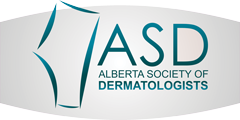Rosacea: Causes, Prevention, and Treatment
Rosacea
Rosacea is a redness, swelling and irritation of the face. The redness and irritation that is indicative of rosacea usually begins across the central area of the face, including the eyes, nose, cheeks, and forehead. Rosacea can also affect the ears, chest, neck, scalp and upper back. Some people also experience burning, gritty eyes, a semi-permanent redness of the face called telangiectasia and small red bumps. The symptoms of rosacea often develop in people between the ages of thirty and fifty.
This skin disorder can also develop during adolescence, in part due to the fluctuating levels of hormones at that time period of an individual’s life. Rosacea can affect both men and women, but women are three times more likely to develop this skin disorder than men. Rosacea is found frequently among Caucasians; it has also been known to affect those of Asian and African descent.
Causes
There are many different environmental triggers that have been known to cause rosacea. Some of these triggers include chemical exposure, such as exposure to high levels of chlorine in a hot tub or pool, or exposure to irritants that are found in medications and some types of cosmetics. Additionally, rosacea symptoms may be triggered in some people by high levels of stress, consumption of spicy food, going from cold to hot temperatures, smoking, and drinking alcohol.
Prevention
Experts suggests that individuals who are susceptible to rosacea keep a diary so that they can track their own individual lifestyle and behaviors that trigger rosacea symptoms. For example, an excess of chocolate, sunlight exposure, or even hot flashes during menopause can cause a bout of rosacea. Many people also find that quitting smoking can alleviate symptoms of rosacea. If an individual keeps a diary or journal, it can help indicate which the behaviors that trigger rosacea so he or she can avoid those behaviors.
In addition, individuals who suffer from rosacea are advised to use a gentle skin cleanser, such as Dove or Neutrogena for sensitive skin, and to wear only mineral-based cosmetics. It is also recommended that people with rosacea should stay away from harsh, alcohol-based astringents and toners. It is important for individuals with rosacea to wear a zinc oxide sunscreen when they go out in the sun and a wide-brimmed hat to further protect delicate skin. When possible, it is best to use only organic, high-quality sunscreens that are free of harsh chemicals.
Treatment
If an individual suffers from acna rosacea, there are a number of topical antibiotics that can relieve symptoms. Topical antibiotics, such as erythromycin, clindamycin and metronidazole, have all been shown to be effective for some rosacea patients. If an individual with rosacea does not respond to topical antibiotics, an oral antibiotic may be necessary to get symptoms under control. It is only advisable to use retinoic acid once the symptoms of acna rosacea have subsided. At which point, an acne rosacea patient may benefit from the rejuvenating properties of retinoic acid when the symptoms have abated.
Oral Antibiotics
Many people with rosacea respond quite well to a course of oral antibiotics. Oral antibiotics have an anti-inflammatory effect and also help minimize eye complications and reduce redness and flushing.
Topical Antibiotics
Prescription strength topical antibiotics have been shown to be effective at reducing the symptoms of acna rosacea. Topical antibiotics are not effective on spider veins.
Light-Based and Laser Therapy
Light-based and laser therapy can help alleviate and control symptoms of rosacea and may be more effective than oral or topical antibiotic medications alone. There are a number of light-based and laser treatments available to rosacea patients today. For instance, KTP skin laser treatment helps reduce redness without bruising the skin, although there will still be some swelling for up to 3 days with this treatment.
Pulsed Dye Laser Therapy
A popular laser treatment that is highly effective at reducing the appearance of spider veins is PDL therapy, or pulsed dye laser therapy. In this treatment, a highly focused light laser targets the red pigmentation of the skin discoloration and destroys the blood vessel by a pulse of heat. Most patients experience bruising for up to ten days from this laser treatment, at which point the bruise clears up and the spider vein is either much less visible or gone completely. Up to 90% of the patients who elect to undergo the pulsed dye laser treatment experience a resolution of their symptoms in only one treatment.
Fotofacial Treatments
Fotofacial treatments, or IPL, is appropriate for rosacea patients who experience a generalized redness that covers the face, including visible spider veins. This treatment entails up to five sessions, approximately a month apart. Many of the symptoms of rosacea are resolved in 3 to 5 sessions with the IPL treatment, including reducing the appearance of spider veins, brown spots and the general redness that often covers the face of rosacea patients. The IPL treatments are less effective for reducing or eradicating the appearance of spidar veins than the PDL treatment, but the Fotofacial treatments also cause much less bruising of delicate facial skin.

